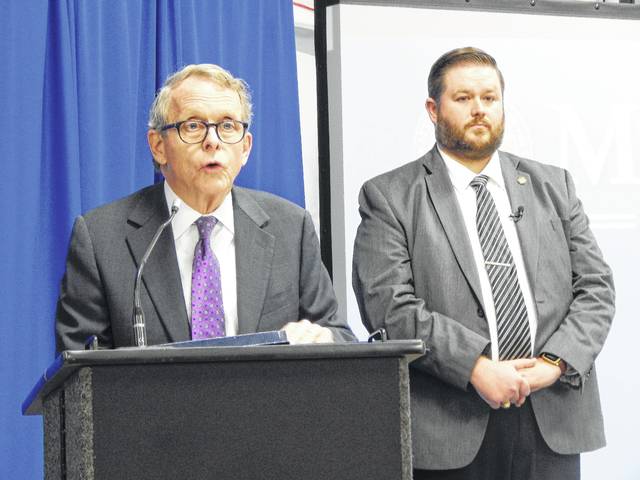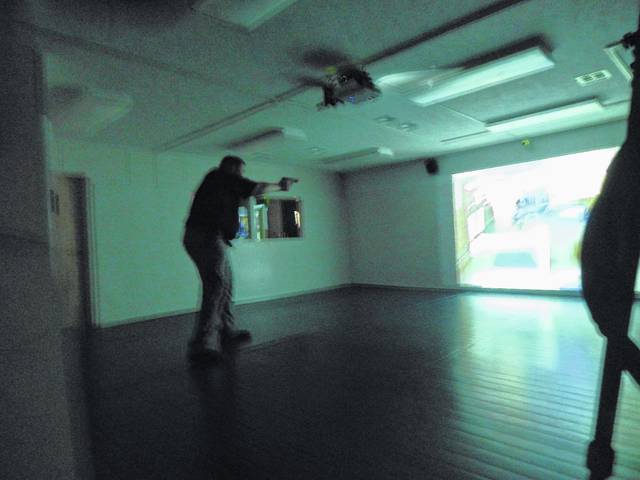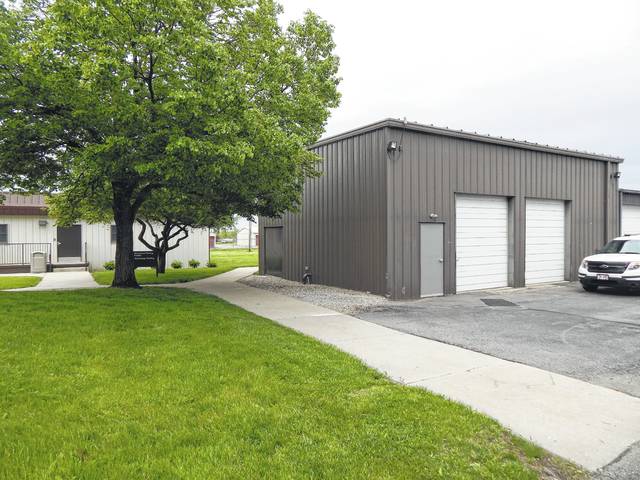


LONDON – Ohio police departments wishing to expand training for their officers have a new tool at the Ohio Peace Officer Training Academy (OPATA) in London.
At a press conference Tuesday, Ohio Attorney General Mike DeWine revealed the start of the “advanced training village,” which will offer in-depth courses on how to better handle the tense situations officers face daily.
The facility is the result of assessments he and a task force of various community and government leaders made concerning the state of law enforcement training in the state, starting in 2014.
“This was as a direct result of the tragedies in Ferguson (Missouri), the Tamir Rice tragedy, the tragedy at the Walmart in Xenia,” he said.
One of these results was this training facility, which aims to provide a more realistic simulation of possible situations.
“When officers are in a stressful situation, their thoughts reflectively turn to similar experiences for guidance and officers must make life or death decisions in a matter of moments, split seconds,” said DeWine.
Some of the topics include de-escalation training, single-officer response, building searches and firearms training.
The facility currently consists of two buildings, each with similar features.
The first building has a 180-degree spread of large screens connected to a computer. It’s called a MILO Range Theatre Firearm Simulator and can run 500 scenarios the officer can go through. The rooms are lined with surround sound speakers and scent generators that can mimic the smell of gun powder.
During a scenario, a prompt on the screen will explain the situation and the officer will behave as he would in the field while instructors assess.
“They have to use their peripheral vision and it adds a little more stress because they have to look at all different areas,” said James Burke, director of advanced training at OPATA.
Virtual demonstration
Wayne DeMolt, an OPATA staff member, ran a course in this building. The scenario was DeMolt working as a patrol officer. A passerby on the screen approached and told him that she noticed two suspicious individuals entering an abandoned building.
The simulation then had him enter the building with a virtual officer. The building was dark, so he used a flashlight.
He turned down a hallway when a woman appeared on the screen armed with a pistol. He warned her to put the weapon down and fired when she aimed it at him. Then a man appeared on the far right screen, armed with a fully-automatic assault rifle.
He fired on the potential virtual assailant.
The second building, “the shoothouse,” is a partial mockup of an office that can be used for multiple scenarios. During the demonstration, it was a hospital.
Some of the rooms have padded floors so officers can safely perform takedowns of live instructors playing the role of a suspect.
The scenarios can be linked to different buildings and continue from place to place.
DeMolt demonstrated a second scenario in which he was investigating an abandoned portion of a hospital with an individual inside. The individual appeared as a virtual person but also as a live actor who ran out of the building firing a mock training gun that made popping sounds. The sensors let off a smell similar to burnt gun powder.
In the second building, DeMolt tried to calm an angry civilian. He then was ambushed by the mock suspect and took him down with his hands.
Meanwhile, instructors inside a control booth observed DeMolt through cameras in the second building. In a real class, the instructors would use the facility to provide feedback and assess the trainee’s actions.
These two spaces are the first of eight planned.
Future buildings will include a mock apartment building and staircases to prepare officers in typical urban environments. Many of the future structures will be made of reclaimed shipping containers.
DeWine said that he hopes the unique opportunities provided through the courses at the facilities will give the best possible experience for Ohio’s law enforcement agencies.
“Being a police officer is one of the most dangerous jobs,” said DeWine. “That’s why we created this immersive training village. We want the intensive hands-on training to enable officers to react quickly and appropriately, retain on the job safety and make decisions with the best possible outcomes while protecting the public.”




